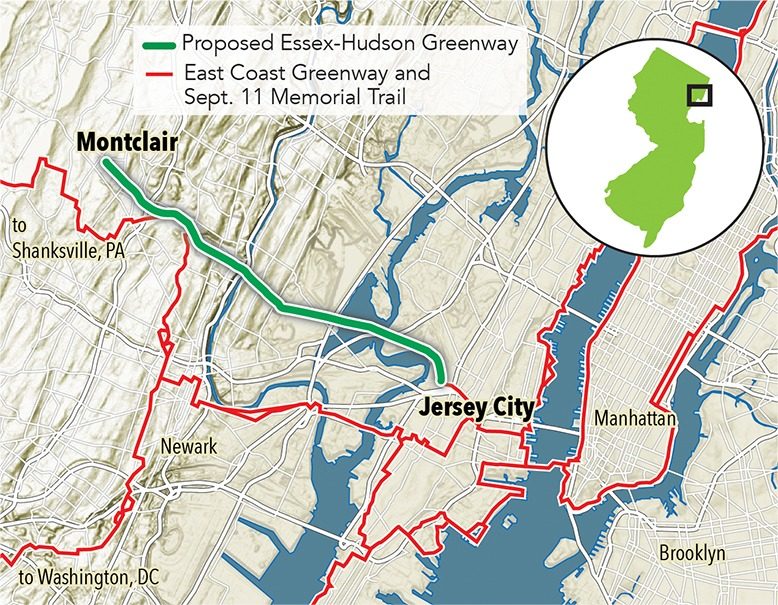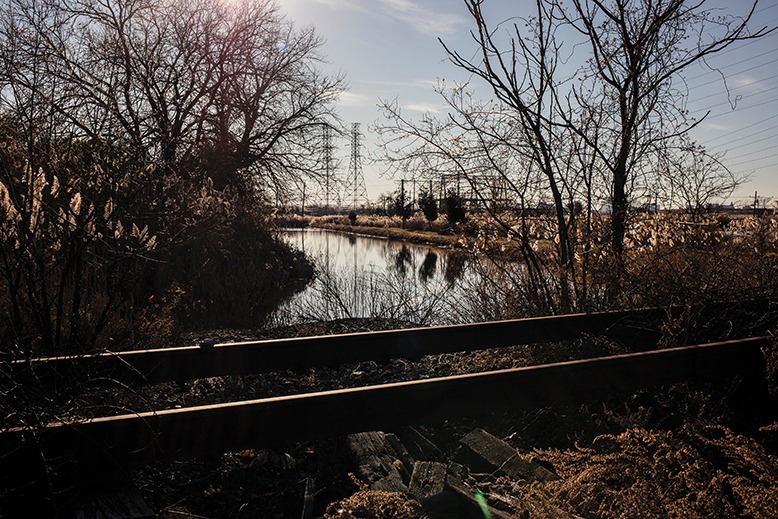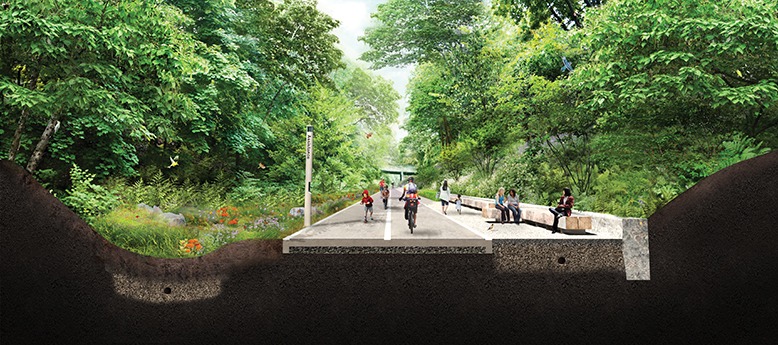
When it’s completed, New Jersey’s recently announced Essex-Hudson Greenway will connect with two other important trails: the September 11th National Memorial Trail and the East Coast Greenway.
The September 11th trail is a a 1,300-mile system of trails that links the National September 11 Memorial and Museum in New York City, the National 9/11 Pentagon Memorial in Arlington, Virginia, and the Flight 93 National Memorial in Shanksville, Pennsylvania. The route serves as a symbol of resiliency and character and as a tribute to those who died on 9/11.
The East Coast Greenway, founded in 1991, connects 15 states and 450 cities and towns along 3,000 miles from Maine to Florida. East Coast Greenway advocates are calling the new park in New Jersey a “game changer” for their trail.

The trail will pass through the Meadowlands, including this portion in Kearny. Photo by Bryan Anselm
Historically, the East Coast Greenway route connected Jersey City to Newark via roadways and sidewalks along heavily trafficked U.S. Route 1 and 9. Organizers are working to foster a safe walking and biking route through the country’s most populated corridor.
In November, Governor Phil Murphy pledged to purchase nearly 9 miles of an unused rail line, stretching from Montclair to Jersey City, for a new state park called the Essex-Hudson Greenway. The park will feature a pedestrian and bike trail running for the entire length of the former rail line. The train tracks will be removed.
The 135-acre park will likely open in stages, says Essex County Commissioner Brendan Gill, who expects certain portions to open in a few years.

A rendering shows Montclair’s future portion of Greenway. Courtesy of Mathews Nielsen Landscape Architects/Open Space Institute
The goals include easing traffic, reducing pollution, offering green space for urban areas, providing a safe place for biking and walking, and becoming an economic engine for communities as park goers stop along the route at local restaurants and stores.
“When you get an opportunity like this, it’s extraordinary, without a doubt,” says State Senator Teresa Ruiz, who grew up near the tracks in Newark and still lives in the same area. “It’s the most amazing thing that any government could do.”



